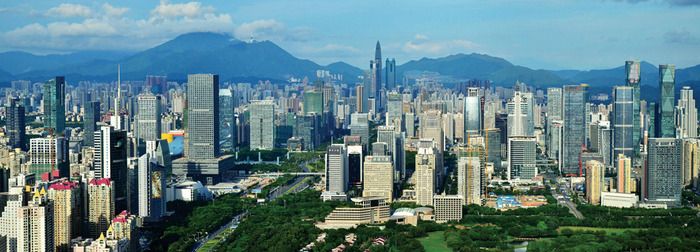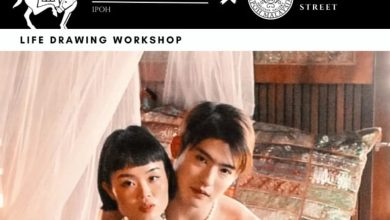Postcard from Shenzhen – Part 2


Shenzhen is probably the most liveable tier-1 city in China although this is not widely known. A city planned from ground zero has many attributes. The streets are wide – eight lanes in many places, traffic is reasonably orderly and drivers are generally quite courteous – stopping at zebra crossings. Most streets are tree-lined. Shenzhen has more parks per square mile than any big city in China. In parts it hugs the coast. In fact there are good beaches just a bus ride out of the city limits. Shenzhen has over 300km of cycle tracks. Although not as cultured as Beijing, Shanghai or even Chung Ching, it’s not a cultural desert. It has many art galleries, libraries, international class concert halls, museums, book shops. The Art Village in Dafen is something else! “You want a Picasso, Sir? No problem. Van Gogh, Vermeer, Monet . . . give me a minute.”
But what is Shenzhen really like? I believe people make a place (like Ipoh) and Shenzhen is no different. Like big cities everywhere people are on the go all the time busily “cari makan”. But every now and then you see the kind side of the inhabitants. For instance, they do give up their seats in public transport for the elderly and those with children. It’s rare that I have to stand in the bus or the MRT. (It’s different in KL.) Ask for directions and they would gladly help you.
I asked for the post office, the guy misunderstood me and took me to the postal bank instead. At the bank they tried to give me directions and when that failed because of my fantastic Mandarin, the clerk took me there himself. That’s kindness for you. But this kindness I have found everywhere I have been in China especially in small towns and villages. Once on a bus in a remote area the lady opposite me gave me a “chang” which she made. Me, a total stranger, a “lauwai” with hardly a word of Mandarin. Another time the guard at a national park allowed me in free.
So why do many Malaysians say the Chinese are rude? I can only think that it’s a language and cultural problem – we are not used to their ways. In Shenzhen I can say most of them are country bumpkins who have only recently come from the ulu and most of them are blue collar (or were before they made good). Their ways are rough and they speak loudly and many still spit or snort in public (less these days). As the new generation of Shenzhen-born increases and people travel abroad more, the people will acquire more socially acceptable habits.
China’s progress is impressive but we must remember that it’s a huge country with a huge population. Many things remain much the same as before especially common practices and expectations. What would be unacceptable to us is perfectly normal to them. For instance, they are so used to crowds that privacy is not a big deal. Just to illustrate: Dentists operate in full view of the public, just like a shop, you can look through the glass front and see him treating, his patients. In some rural areas they do it in the park – al fresco dentistry, no extra charge.
It’s the same in hospitals. No privacy! Patients wait for the doctor, card in hand and when he arrives they crowd into his examination room each thrusting forward his medical record card. He takes the nearest.
“Let’s have a look. . . . Lower your pants please” Snigger all round.
“Now cut that out, this is serious” Decorum restored he examines the patient. “Mmmm, you definitely have full blown syphilis. Well if these pills I am prescribing don’t work . . .” Tsk tsk (he shakes his head gravely) “we will have to perform extreme sunnate!” “Yes doctor, thank you doctor” he nods and leaves to collect his antibiotics.
“Next”, and he grabs the next card. “Still not functioning? Mistress not happy? Okay last resort, try Tongkat Ali. If this fails I suggest you become a monk” “Next” and so it goes on till he sees all the patients, right in front of everyone. Of course it’s not that extreme but it’s true – No privacy!
And don’t ever have a stomach ache in a bus station, especially in small towns. You don’t want to squat together with ten others in full view of everyone else. Never mind the stink, what if you are not well endowed?
It will take time to change people’s expectations but change they will.
Already I can see a change in their attitude to dogs. The Chinese have always liked dogs – grilled, stewed or steamed in herbal soup! But seriously, while eating dog is still common in rural China (keeps you warm in winter they say) in urban areas they are treated almost as well as their ‘little emperors’.
Meanwhile meandering aimlessly I stumbled onto “Malaysia Drinking” (how did they know we are “kaki botol”?). Well it turned out to be a coffee outlet, I looked at the menu: KL Latte, Melaka Black, and so on, I ran my finger down the list twice, no IPOH White. Why? Insulted, I walked off in a huff. Then at Carrefour (I am a great loafer) I saw “Teh Tarik, hand-made”. Wow!
I assure you, whether coffee or teh tarik it’s not Malaysian; not what we expect at home; same for Chinese food. Conversely, to the people here I may be Chinese descent but not Chinese – my mannerisms are different, the way I speak (dialect or Mandarin), my expressions, they are different. That’s because I am not Chinese but Malaysian of Chinese descent.
Similarly an Indian Malaysian or a Malay Malaysian will be regarded as a foreigner, in India or Indonesia. That’s because we are Malaysians whose ancestors have come from Indonesia, India or China and over time have acquired a unique Malaysianess.
Yet you have misguided politicians who demand that we balik Tongsan or India whenever we don’t agree with them because our ancestors were from there. By the same token I can also ask them to balik Indonesia. But I won’t because this is as much their country despite the fact that some of their fathers only came over like yesterday. These people want to make the country mono ethnic, mono culture yet they proudly proclaim “Malaysia Truly Asia”, talk about “Bikin tak serupa cakap!”
Not too long ago lion dances were banned because they were considered foreign. Schools could not perform dances not on the government approved list – that is Chinese and Indian dances. Funnily, ballet was on the approved list. So ballet must be a Malay dance then? You can say that’s all in the past but there are still politicians who harbour such ideas.
There are religious kooks who think yoga is haram and Muslims must not practise it, that Christmas carols must not be sung publicly and Valentine’s Day is a Christian religious festival.
There are those who think Malay/Islamic culture is Malaysian culture forgetting that the Orang Asli, Dayaks, Penans, the natives of Sabah and Sarawak also have their cultures. And they were here long before us.
People forget that culture cannot be artificially created by political manipulations or religious edicts, culture evolves over time from interaction between the communities.
Travel and you will discover how Malaysian you are. Maybe then we will stop demanding others balik here or there. The only balik I will do is balik kampung TR. Shenzhen is okay, China a great place to visit but Ipoh is home, Malaysia tanah air.
Yin
the man from TR


